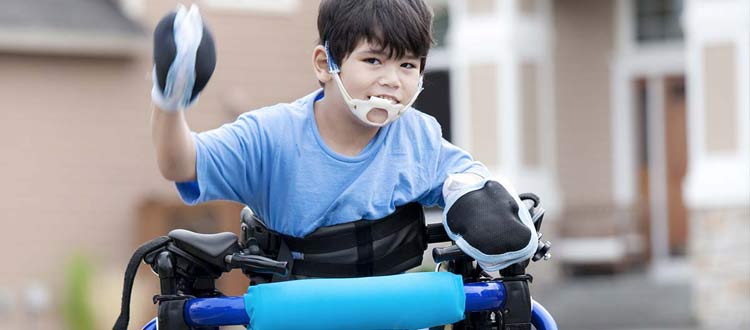Cerebral Palsy
It is a term that refers to a group of disorders that directly affects the muscle movement with coordination. In some of the cases sensation, vision, and hearing are also affected. Cerebral is related to the brain, thus certain parts of the brain, involuntary or non-voluntary movements get damaged. The problem is not contagious, thus it is not mandatory that it will affect cognitive or intellectual ability. Opting for best Cerebral Palsy treatment in India can give you a good quality of life.
Symptoms of Cerebral Palsy:
The symptoms always vary from person to person and can range from mild to severe. The symptoms can be severe or less severe over time. Some of the common symptoms include:
- Tremors or involuntary movements
- Variation in muscle tone
- Difficulty speaking
- Difficulty in performing motor skill milestone
- Spasticity
- Lack of muscle coordination
- Excessive drooling
- Problems with swallowing
- Difficulty walking
- Neuro related problems
Different types of Cerebral Palsy:
There are various types of Cerebral Palsy that affect different parts of the brain. Most of the children in India are born with Cerebral Palsy, but it is not necessary that they show signs of disorder in early months. Cerebral Palsy Treatment in Uttar Pradesh helps in early detection of the disease and helps your family to live a tension free life by giving proper treatment.
1. Ataxic Cerebral Palsy: it is the least common type of Cerebral palsy and is characterised by voluntary muscle movements that appear clumsy, disorganised, or jerky. People suffering from this type have co-ordination and balance problems. They may have difficulty while walking, grasping objects, writing and performing various motor skill functions.
2. Hypotonic cerebral Palsy: It is characterised by an overly relaxed and diminished muscle tone. The legs and arms appear floppy and look like a ragdoll. The person with this type may have trouble breathing and with the passage of time may have difficulty while sitting straight.
3. Dyskinetic Cerebral Palsy: People with this problem have trouble in controlling their movements that is the movements can be jerky, rapid, writhing, or slow. It causes involuntary and abnormal movements in the hands, legs, and arms.
4. Spastic Cerebral Palsy: It is a common type of Palsy that affects 80% of the people. It causes exaggerated reflexes, stiff muscles, and makes it difficult to walk.
How is cerebral Palsy diagnosed?
The professionals at Cerebral palsy treatment center diagnose Palsy by considering the complete medical history. By evaluating the symptoms and a physical neurological test is performed that helps in detecting CP. There are a few additional tests that help in diagnosis:
- Blood tests: A blood sample is taken and tested to figure out the conditions of any bleeding disorders.
- Ultrasound: It is a relatively quick, easy and inexpensive method. High-frequency sound waves are used to get the brain images in young infants.
- CT Scan: It creates clear and cross-sectional images of the brain and reveals any brain damage.
- MRI: Powerful magnets and radio waves are used to produce clear and detailed images of the brain and identify any injuries or abnormalities of the brain.</
- EEG: This method evaluates the electrical activity of the brain.
Treatment:
There are different types of cells in our brain and yes it is possible to get rid of this brain disorder by just treating these cells. Stem cell center helps to inject stem cells and repair damaged nerve cells. When it comes to health no one wants to take risk thus stem cells therapy for cerebral palsy will aim to repair and protect the damaged cells before they are entirely lost. For this, it is mandatory that the person with disorder gets the treatment as early as possible.

